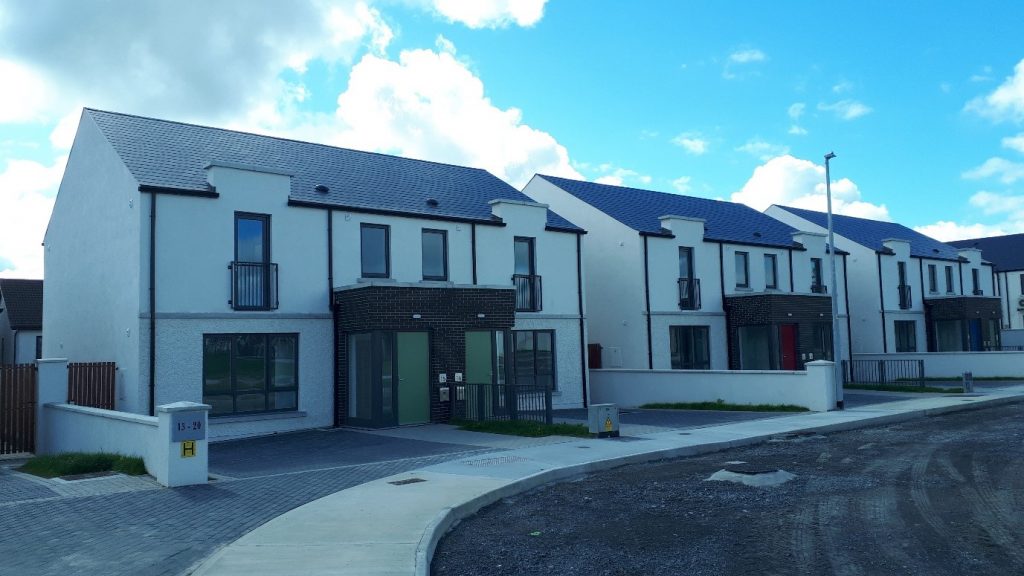Ireland have been rolling out its NZEB standards between 2017 and 2019 and it is anticipated that the UK will be following suit before the end of 2020 for both domestic and non-domestic buildings.
NZEB Affordable Housing Development
What is NZEB?
What does NZEB mean for New Builds?
As per new Part L building regs all new builds must be designed and constructed “to ensure that the energy performance of the building is such as to limit the amount of energy required for the operation of the building and the amount of carbon dioxide (CO2) emissions associated with this energy use”.
This is achieved by:
- The use of renewable energy sources, such as solar PV, solar thermal, heat pumps etc.
- Improving the building fabric U-values
- Implementing construction measures to improve the air tightness
- The use of high efficiency boilers and low loss hot water cylinders
- Integrated building services controls
- Insulation of pipes, ducts and vessels
- Mechanical ventilation systems
- Limiting heat gains to prevent overheating
- The overall performance of the complete building

What is the result of a NZEB build?
As specified within NZEB Part L, a dwellings Carbon and Energy performance must be at least 25% improvement compared to the previous Part L while Non Domestic NZEB standards represent a 60% improvement compared to its previous instalment.
This results in a significant operational cost savings due to reduced heating demand as well as lower unforeseen maintenance costs.

All Benefits of NZEB:-
- Combat climate change
- Lower your buildings operational cost
- Enjoy fresher indoor air
- Buildings are more durable & built to a higher standard of construction
- Building controls are more responsive and smarter
- Building resale value is higher
What does NZEB mean for existing builds (retrofitting)?
Where major renovations (defined as more than 25% of the surface envelope of the building undergoes renovation) are carried out on a building, the whole building is required to meet a tailored NZEB requirement that is appropriate to refurbishments. Although the requirement is less stringent than new buildings, there is a significant energy improvement and carbon reduction achieven by hitting the NZEB renovation standards.
Don’t be fooled by NZEB
NZEB should not be confused with zero energy or zero carbon buildings. They are a major improvement in construction standards but are still a net consumer of energy and a net producer of carbon emissions. To be truly zero energy buildings must go beyond NZEB and further improvements are required across all aspects of the construction with serious consideration to larger renewable energy generation and storage.

Lowering your buildings operational cost
Hoban Park Development in Callan, IRELAND
Six of the houses were built for social housing under the incremental purchase scheme.
There is strict eligibility criteria for the scheme but Kilkenny County Council are delighted with the results.
Lawler Consulting, appointed M&E consultants for this project, targeted low U-value construction, high air tightness, heat pump & solar PV, mechanical ventilation, along with efficient hot water storage & insulation.
Stay up to date with all our latest developments here – find us on LinkedIn, Facebook, and Twitter.

Learn More About Part L / NZEB
Watch now to learn what to do to make your residential project NZEB compliant
Put your name and email in the boxes below and watch our Senior Sustainability Engineer, James Duggan explain the intricacies of Part L / NZEB for dwellings.
